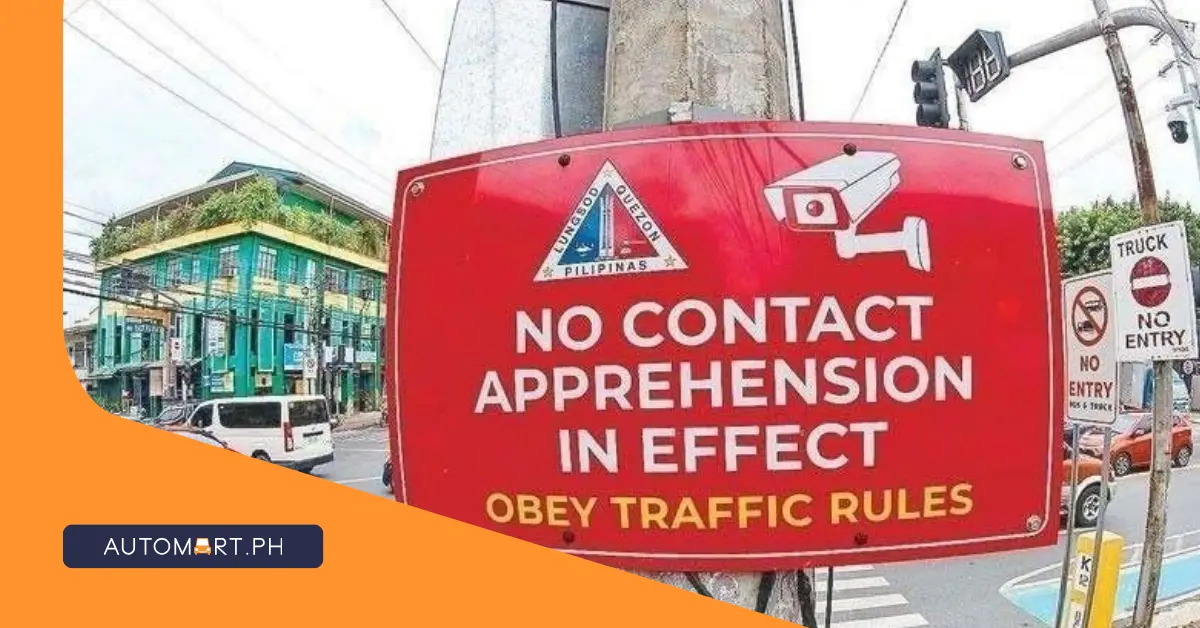
No-Contact Apprehension Policy (NCAP) Is Back
Updated on December 18 2025
The No-Contact Apprehension Policy (NCAP) is officially back in force. With the Supreme Court lifting the temporary restraining order on its implementation, the Metropolitan Manila Development Authority (MMDA) have began re-enforcing NCAP today, May 26.
The policy uses CCTV cameras and other digital surveillance technologies to monitor and penalize traffic violators without physical interaction between drivers and traffic enforcers. Instead of being flagged down on the spot, violators receive formal notices via mail.
Roads Covered by NCAP
NCAP will apply to key circumferential and radial roads across Metro Manila, many of which are known hotspots for traffic violations:
Circumferential Roads (C Roads):
C1 – Recto Avenue
C2 – Mendoza Street, President Quirino Avenue
C3 – Araneta Avenue
C4 – EDSA
C5 – C.P. Garcia Avenue, Katipunan Avenue, Tandang Sora Avenue
Radial Roads (R Roads):
R1 – Roxas Boulevard
R2 – Taft Avenue
R3 – South Superhighway
R4 – Shaw Boulevard
R5 – Ortigas Avenue
R6 – Magsaysay Boulevard, Aurora Boulevard
R7 – Quezon Avenue, Commonwealth Avenue
R8 – A. Bonifacio Avenue
R9 – Rizal Avenue
R10 – Del Pan Street, Marcos Highway, MacArthur Highway
What Are the Benefits of NCAP?
NCAP is designed to improve driver discipline and promote road safety. Knowing that violations can be recorded at any time, even without the presence of enforcers, many motorists become more cautious and law-abiding.
It also helps curb corruption and bribery, since there’s no face-to-face interaction between traffic officers and violators. By automating enforcement, the MMDA hopes to ensure a fairer and more transparent system.
Challenges and Concerns
Despite its advantages, NCAP faces some legitimate concerns that motorists should be aware of:
Outdated Vehicle Records
One of the most common issues involves ownership records not being updated with the Land Transportation Office (LTO). This can result in violation notices being sent to the previous owner of a vehicle that has already been sold or transferred.
Exemption Recognition
Certain vehicles, like those used by government officials, emergency responders, and other authorized personnel, may be exempt from traffic rules under specific conditions. Automated systems may fail to recognize these exemptions, resulting in wrongful penalties.
Appeal and Dispute Process
There have been concerns in the past regarding how accessible and efficient the process is for contesting NCAP violations. Delays or lack of clear guidelines can frustrate affected motorists and lead to questions about due process.
For NCAP to be effective and fair, it's essential that these issues are addressed through updated systems, public education, and efficient grievance mechanisms.
Final Thoughts
The return of NCAP marks another step in modernizing traffic enforcement in Metro Manila. For motorists, this means staying alert, informed, and compliant with traffic regulations, especially on the roads covered by the policy.
At Automart.Ph, we recommend checking your LTO records regularly, keeping your vehicle registration details up to date, and driving responsibly to avoid unnecessary penalties. As traffic enforcement goes digital, awareness and preparedness are your best tools on the road.